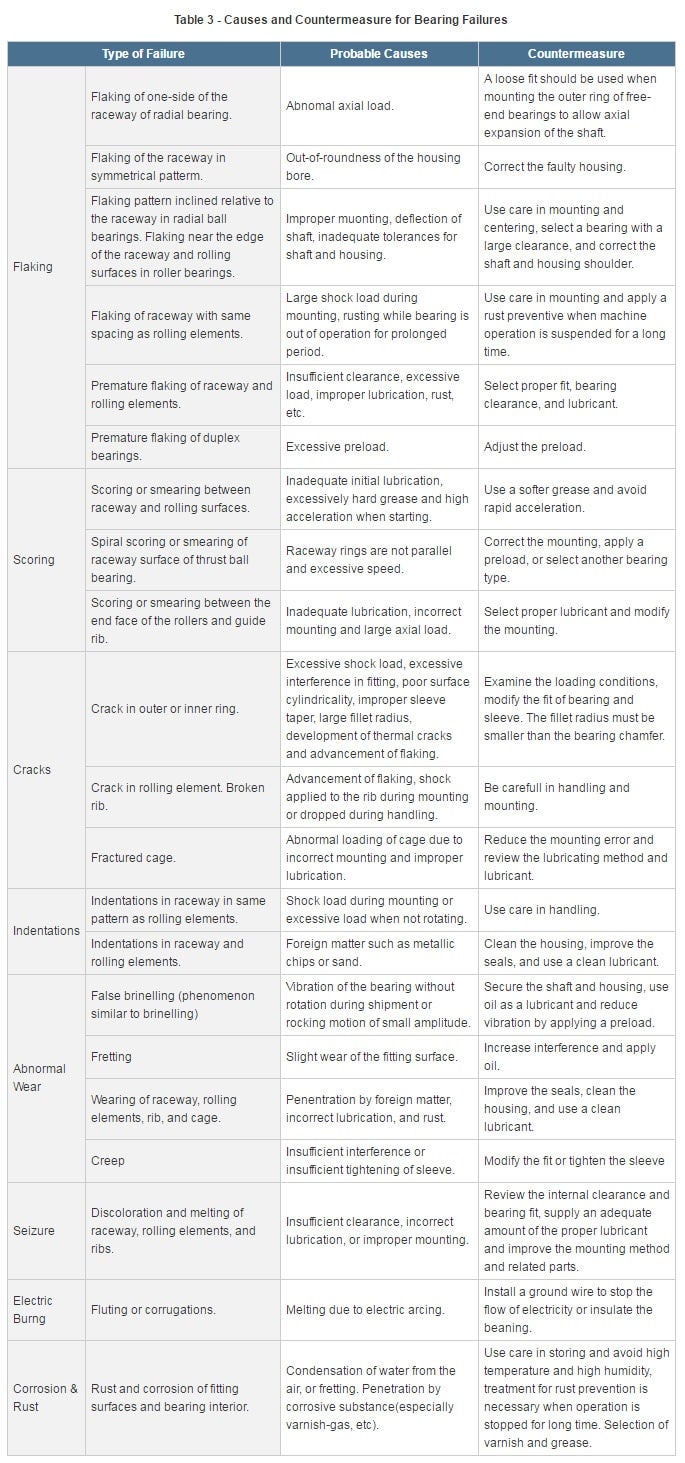Regular Maintenance and Inspections
Detecting and Correcting Irregularities
To maintain the original performance of a bearing for as long as possible, proper maintenance and inspection must be performed. If proper procedures are used, many bearing problems can be avoided, allowing for improvements in the reliability, productivity, and operating costs of equipment containing bearings.
Periodic maintenance should be performed following specified procedures. This periodic maintenance encompasses the supervision of operating conditions, the supply or replacement of lubricants, and regular periodic inspection. Items that should be regularly checked during operation include bearing noise, vibration, temperature, and lubrication.
If an irregularity is found during operation, the cause should be determined and proper corrective actions should be taken after referring to common causes and recommended countermeasures (Table 3). If necessary, the bearing should be dismounted and examined in detail.
Bearing Failures and Countermeasures
In general, if rolling bearings are used correctly, they will survive to their predicted fatigue life. However, they often fail prematurely due to avoidable mistakes. In contrast to fatigue life, this premature failure can be caused by improper mounting, improper handling, improper or insufficient lubrication, entry of foreign matter, or abnormal heat generation.
For instance, the causes of rib scoring may include insufficient lubrication, use of improper lubricant, a faulty lubrication system, entry of foreign matter, bearing mounting error, excessive deflection of the shaft, or any combination of these. Thus, it is difficult to determine the real cause of some premature failures.
If all the conditions at the time of failure and before the failure are known, including the application, operating conditions, and environment, then, by studying the nature of the failure and its probable causes, the possibility of similar future failures can be reduced.
The most frequent types of bearing failure, along with their causes and corrective actions, are listed in Table 3.

